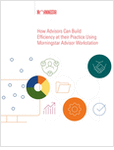News sources are already reporting sightings of the Grinch poised to steal Christmas. Subpar sales are signaling a frigid holiday season ahead, and retailers are aggressively courting consumers through deep discounts. But Americans should avoid this snare.
Despite the economic gloom of the past several years, consumers in over their heads in debt have been responding, slowly, by paying off their obligations and increasing savings. A recent survey by Consumer Reports indicates the percentage of holiday shoppers who charged over $1,000 on their credit cards fell to 16 percent in 2010 from 23 percent the previous year. But holiday shoppers spent a still extravagant $556 on average, and 6 percent of Americans are still paying off their holiday charges from 2010.
In an earlier era, a time when Americans were better known for creating rather than spending wealth, Poor Richard would have rather gone to the public library his alter ego Ben Franklin founded as a young man than purchase a Kindle; he’d patch his wife’s purse before buying her a Prada handbag. We need to relearn this trait of thrift that made Poor Richard’s Almanack a runaway bestseller in Colonial America because it has far lasting benefits even for us, even today.
In one of the most effective behavioral experiments ever conducted, psychologist Walter Mischel offered a marshmallow, Oreo cookie or pretzel to 600 4- to 6-year-olds, but promised them a second marshmallow (or cookie, etc.) if they waited 15 minutes before eating their treat. Some of the kids gobbled the candy right away, but of those who attempted to delay the gratification, just one-third managed to wait out the clock.
It was what happened decades later that made this 1972 experiment at Stanford University so famous. Because the professor’s children had grown up with many of the test subjects, Mischel learned anecdotally that the original test seemed to be predictive of success in later life. A follow-up study conducted in 1990 showed that the group that was able to wait for that second marshmallow had significantly better SAT scores. And a further study this year shows the participants, now in their 40s, maintain the same disposition to either delay gratification or seek it immediately.








 November 23, 2011 at 07:00 PM
November 23, 2011 at 07:00 PM










